In this article, I’ll take you through some of the techniques that form the cornerstone of Jeff Beck’s guitar style and discuss how he uses them to create his own unique brand of sound. I’ll also talk about his go-to equipment and his main musical influences.
No matter how good you are, Jeff always seems better. I hope you find the information in this article entertaining and it helps you take your guitar playing to the next level. For now, just sit back with your favorite beverage and enjoy reading about the man I consider to be one of the all-time greats!
Updated on September 21, 2023.
So, Who The Heck Is Jeff Beck?
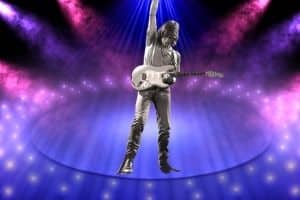
Did you really have to ask?! If you are a serious rock, blues, or jazz-fusion guitarist, then you most likely are quite familiar with the man that has won 8 Grammy awards, is a two-time Rock And Roll Hall Of Fame inductee, and has been called “The Gov’nor” and “The Axe Murderer.” See Rock And Roll Hall Of Fame – The Killer Guitar Players!
Jeff continually reinvents himself, preferring not to get locked into one particular musical style. He originally played with The Yardbirds before leaving to form many versions of his own band. I could go on and on, but instead of simply regurgitating all the things you can read about on Wikipedia, I’ll give you my own take on what makes some of the best guitarists in the world speak his name with reverence.
Jeff is definitely one of “God’s special people”, who immediately stands out from the crowd of guitar heroes, whether you like what he does or not. I first heard his Freddie King cover of “Going Down” way back in 1972 on his “Jeff Beck Group Album.” I was so blown away that I even remember what I was doing at the time (playing pool at my house with my brother and our two friends).
We all worshiped on the altar of big guitar solos from sonic titans like Jimi Hendrix and Jimmy Page, but as the guitar player in our band, I couldn’t believe that they weren’t as stunned as I was with Jeff. Looking back, I now realize that a lot of his subtle magic can easily escape the attention of non-guitar-playing folk. This whole album is filled with incredible “Beckisms” that make me smile, even after all these years.
Jeff Beck’s Guitar Style

It’s almost impossible to pin down the essence of what makes Jeff Beck’s style so unique. His guitars, amps, equipment, and preferred settings/setups all come into play, but most of his sound comes from his fingers. I’ve heard many guitar players attempt to cover his tunes and fail miserably to capture the special something that makes him the one and only Jeff Beck.
Here are some of the techniques he uses to work his magic. If you have ever actually seen him play, then one of the first things you probably noticed is that he continually adjusts the controls on his guitar throughout practically every song.
Whammy Bar Technique – The Cornerstone Of Jeff Beck’s Guitar Style
Jeff’s unique style relies on using the guitar’s whammy bar and volume control to create notes that sound like they are being “pushed or pulled” in a particular direction. He can do this by picking the strings with his thumb and index fingers while controlling the whammy bar and the volume and tone control with the other three fingers. He fiddles with the volume and tone knobs almost constantly.
A typical Jeff Beck guitar setup utilizes a “floating” bridge, which allows him to use his whammy bar in both directions. He can easily pull a note up as high as 2 to 3 semi-tones and higher when the musical circumstance calls for it. This setup also allows him to “whammy up” by pressing on the bridge with the palm of his hand instead of using the bar, a particular technique that I’ve only seen him do.
Jeff uses his whammy bar so dynamically that he can go from the slightest bend to a massive divebomb seamlessly! He is an absolute master at conjuring quarter-tone and microtonal bends that complement the harmonic structure of the song perfectly while delightfully twisting the melody. He is in total control of your musical emotion and loves to toy with it at will.
Have a listen to what he does with Stevie Wonder’s “Cause We’ve Ended As Lovers” on this Live At The Hollywood Bowl video (2017), and you will hear his guitar sing and mimic the sound of a sad human voice.
Left-Hand Bends And Vibrato
Jeff blends finger bends and vibrato into and around his whammy bar excursions, or he uses them as a featured technique if he’s using a Telecaster. He likes to combine finger bends with volume swells or tone knob adjustments to make them sound almost three dimensional. It’s just an unbelievable experience to watch him do this close up!
Hammer-Ons, Pull-Offs, And Pre-Bends
Although these are generally considered fairly simple techniques, Jeff routinely pulls them off with machine-gun speed and surgical accuracy to make them uniquely “Beck.” He combines them with whammy bar gymnastics to produce a most unusual sound that typifies him in the extreme!
Harmonics – They Really Make Jeff Beck’s Guitar Style Pop
I’ve heard a lot of approaches to adding harmonics to guitar lines but none so unique and quirky as what Jeff does. They help create the signature flash in his guitar licks as he bends them in and out of the musical space-time continuum. He also uses them to create hauntingly beautiful melodic lines.
Take a listen to what he does with harmonics on the song “Over The Rainbow” on his Emotion And Commotion album at a concert in Gothenburg (2011).
Slide Playing
Jeff does a lot of slide playing above the neck to create notes and sounds in a very high register. Often-times he uses his guitar slide to “tap” the note instead of sliding into or out of it. These techniques require extreme precision and a guitar with spot-on tuning and intonation to execute reproducibly. A lot of his slide work reminds me of sci-fi sound effects for alien movies.
Tapping
Jeff uses right-hand finger tapping techniques sparingly. He tends to tap the same note multiple times in rapid succession, which fits nicely with his particular sound. This is distinctly different from guitarists like Eddy Van Halen (RIP), who did a lot of harmonic tapping, or Steve Vai and Joe Satriani, who tend to tap out intricate melodic lines all over the neck.
Banjo Rolls
Jeff frequently uses “banjo rolls” to spice up short runs of his firey licks. Listen closely, and you will hear them. When I saw Jeff perform live in the late 1970’s he played his version of the theme song from the Beverly Hillbillies TV show during the encore. It was incredible and featured his mastery of banjo rolls. I’ll never forget it.
Dynamics And Emotion
Last but certainly not least is Jeff’s ability to use dynamics to inject emotion into everything he plays. If you have ever heard the great Italian operatic tenor Luciano Pavarotti sing the classic Nessun Dorma, listen to Beck’s instrumental version. It’s an outstanding example of how Jeff can easily convey music’s power and emotion in a genre totally outside his wheelhouse!
This video of Nessun Dorma is from the Eric Clapton’s 2010 Crossroads Guitar Festival.
Jeff Beck’s Main Musical Influences
Here is a list of some of the artists that had the most significant influence on Jeff. To be sure, this is only a modest representation of the artists that inspired Jeff and helped power the evolution of his sound.
This diversity of players eventually led Jeff into the jazz fusion sounds that can be heard on albums like Blow By Blow and Wired.
Les Paul
Les Paul was one of the earliest influences on Jeff Beck’s guitar style. Les’s innovative recording techniques, such as sound-on-sound and echo, which he coupled with dazzling finger speed, caught Jeff’s attention as a way to take the sound of the guitar outside the realm of what was normally possible. This approach ignited the beginning of Jeff’s playing “outside the box.”
Cliff Gallup
Cliff was the lead guitar player in a band called Gene Vincent And The Blue Caps. He used a flat pick in conjunction with a fingerpick on his middle and ring fingers, with his pinky finger left free to work his vibrato bar. Jeff adopted a modified version of Cliff’s technique when he ditched his pick later on in his career and used all of the fingers of his right hand to pluck the strings and work his volume control and whammy bar. He first saw Cliff play guitar in “The Girl Can’t Help It”, which is still one of his favorites.
Buddy Guy
Buddy guy and his Chicago-based blues style, which he took to the next level, left an indelible mark on Jeff’s playing early on. Buddy took much of what he had learned about traditional blues, from Muddy Waters and Howlin’ Wolf, and added his own brand of fiery riffs and showmanship. You can easily hear Buddy’s influence in the dynamics of Jeff’s playing.
Jimi Hendrix
Jimi Hendrix, who made the Marshall amplifier a household name among guitar players, introduced Jeff to what could truly be done with a Stratocaster on overload. Jimi’s “wall of sound”, controlled feedback, and ultimate guitar showmanship provided Jeff with a new musical blueprint. Jimi’s totally unorthodox use of the whammy bar would become a major focus of Jeff’s style.
John McLaughlin And Jan Hammer
John McLaughlin’s work as a guitarist with Miles Davis and the Mahavishnu Orchestra, which also featured keyboardist Jann Hammer, was a turning point for Jeff into jazz fusion territory. Jeff would record several albums with Jan Hammer and made some musical appearances with John, which he has called one of the greatest guitarists ever.
Stevie Wonder
Stevie Wonder’s impressive harmonic structure and melodic patterns caught Jeff’s attention early on in his career. He covered Stevie’s song “Superstition” on the Beck, Bogert, And Appice album. Later, Jeff would do his famous cover of Stevie’s “Cause We Ended As Lovers” on his Blow By Blow album.
Thelonious Monk, Charles Mingus, And Lester Young
Pianist Thelonious Monk, Charles Mingus (bassist and pianist), and Lester Young’s saxophone were all influential sources of Jeff’s songwriting. Jeff famously covered the tune “Goodbye Pork Pie Hat” on his Wired album, which Mingus wrote as a eulogy for Lester, who was known for wearing a pork pie hat.
The Influence Of Jeff Beck On Modern Guitarists
Jeff Beck’s influence on modern guitarists is immeasurable. His innovative techniques, unique tone, and willingness to explore different genres have made him a beacon for aspiring guitarists.
Here, we’ll look at some of the notable names who have cited Beck as a significant influence on their playing. Each of these artists brings a piece of Beck into their own music, ensuring that his legacy continues to thrive.
Joe Bonamassa: A Modern Blues Titan
Joe Bonamassa, a modern blues-rock virtuoso, has often cited Jeff Beck as a significant influence. Bonamassa’s approach to tone and his ability to blend blues with other genres echo Beck’s own stylistic choices.
John Mayer: The Continuum Of Influence
John Mayer, known for his bluesy undertones and pop sensibilities, has expressed his admiration for Beck on multiple occasions. Mayer’s versatility and focus on tone can be traced back to Beck’s influence.
Jennifer Batten: From Student To Stage Partner
Jennifer Batten, who toured with Beck in the late ’90s and early 2000s, has been vocal about how Beck’s style influenced her own guitar playing. Her work showcases a blend of technical proficiency and emotional depth, much like her mentor.
Steve Vai: The Virtuoso’s Virtuoso
Steve Vai, a virtuoso in his own right, has often spoken about how Beck’s emotive playing style has impacted him. Vai’s focus on melody over mere technical prowess reflects Beck’s own approach to the guitar.
Eric Johnson: A Quest For Tone
Eric Johnson, another tone chaser, has cited Beck as an influence, particularly in his quest for the perfect guitar tone. Johnson’s meticulous approach to sound is reminiscent of Beck’s own tonal journey.
Guthrie Govan: The Modern Prodigy
Guthrie Govan, known for his incredible technical skills and genre-spanning abilities, has mentioned Beck as a key influence. Govan’s fearless exploration of different musical styles is a testament to Beck’s impact on the next generation of guitarists.
Jeff Beck’s Collaborations
Jeff Beck has never been one to stay confined within the boundaries of a single genre. Over the years, he has collaborated with a variety of musicians, including some of the most iconic guitar players. Here are some of those noteworthy collaborations.
These collaborations not only highlight Jeff Beck’s adaptability but also his ability to bring out the best in his fellow guitarists. Each partnership is a unique musical conversation, adding another layer to Beck’s already rich legacy.
Jimmy Page: The Yardbirds Era (1966)
One of the most iconic collaborations in rock history was between Jeff Beck and Jimmy Page during their time in The Yardbirds. The two guitarists played together on tracks like “Happenings Ten Years Time Ago” and “Stroll On.”
Eric Clapton & Jimmy Page: ARMS Charity Concert (1983)
Jeff Beck, Eric Clapton, and Jimmy Page, three of the “Yardbirds Greats,” performed together at the ARMS Charity Concert in 1983. They played a memorable rendition of “Layla,” among other hits.
Stevie Ray Vaughan: The Fire Meets The Fury Tour (1989)
In 1989, Jeff Beck teamed up with blues legend Stevie Ray Vaughan for the “Fire Meets The Fury” tour. While they didn’t record studio tracks together, their live performances were nothing short of electrifying.
Brian May: “The Guv’nor” (1991)
Jeff Beck collaborated with Queen’s Brian May on the track “The Guv’nor,” which appeared on Brian May’s 1998 album Another World. The song is a testament to both guitarists’ technical prowess and melodic sensibilities.
B.B. King: “Rock Me Baby” (2003)
In 2003, Jeff Beck and B.B. King collaborated on a live version of “Rock Me Baby,” showcasing the seamless blend of Beck’s rock influences with King’s blues mastery.
Jennifer Batten: “Where Were You” (1999)
Jennifer Batten toured with Jeff Beck and also collaborated on the track “Where Were You,” which is a part of Beck’s live album “Who Else!”
Jimmy Page, Ron Wood, Joe Perry And Metallica (2016)
At the Rock And Roll Hall Of Fame Awards in 2016, Jeff Beck and Aerosmith’s Joe Perry performed a riveting rendition of “Train Kept A-Rollin’,” paying homage to their Yardbirds roots.
Johnny Depp: “Isolation” (2020)
In 2020, Jeff Beck teamed up with actor and musician Johnny Depp to release a cover of John Lennon’s “Isolation.” This collaboration was more than just a one-off project; it was a powerful statement during the COVID-19 pandemic.
Jeff’s Contributions To Film And Television
Jeff Beck has made numerous contributions to film and television, both as a guitarist and as a composer.
Notable Film Contributions:
- 1988: He wrote and performed two songs for the film “Twins,” “The Train Kept A-Rollin'” and “I’d Die For This Dance.” Jeff also made a cameo appearance in the film as a band member playing at the Cowboy Palace.
- 1990: He played the lead guitar solo on the title track of the film Young Guns II, which was also the theme song for the film.
- 1990: He was a featured performer on Hans Zimmer’s score for the film Days of Thunder.
- 1992: He played lead guitar on Roger Waters’ concept album Amused to Death, which was used in the film The Wall – Live in Berlin.
- 1993: He played lead guitar on the song “The Red Shoes” by Kate Bush, which was used in the film of the same name.
- 2002: He composed the score for the Swedish film Via Mystica – en roadmovie.
Notable Television Contributions:
- 1990: He composed the music for the British television series The Comic Strip Presents.
- 1992: He composed the music for the British television miniseries Frankie’s House.
- 1994: He composed the music for the American television film Blue Chips.
- 2004: He composed the music for the British television miniseries Catterick.
In addition to his work on film and television, Beck has also released several live albums and compilation albums that feature his music from various movies and TV shows.
Jeff’s Go-To Equipment
Guitars – The Stratocaster Helped Define Jeff Beck’s Guitar Style
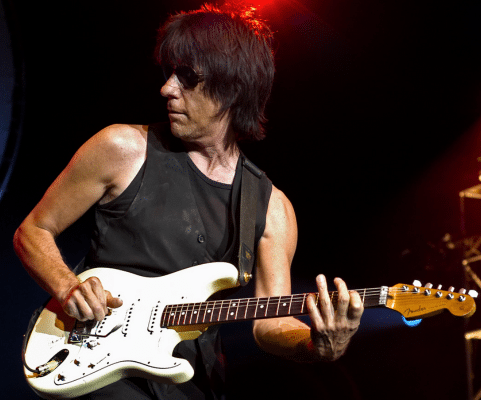
Jeff has played different guitars over the years. He started with a 1954 Fender Esquire in The Yardbirds. He changed to his oxblood Les Paul during his jazz-fusion days and even used Cliff Gallup’s Gretsch Duo-Jet for the rockabilly tunes on the album Crazy Legs.
As his style continued to evolve, he made the Fender Stratocaster his main guitar, which provided him with the whammy bar that helped define his style. He has called the Stratocaster “the perfect guitar” and claims it cannot be improved upon.
He briefly used a pink Jackson “Soloist” guitar with a Kahler Tremolo during his “Flash” album era but returned to his trusty Stratocaster, which he still uses today. He loves the layout of the Strat’s pickup selector switch, volume and tone knobs, and the simplicity of the tremolo system.
Fender makes the Jeff Beck Signature Guitar that he routinely uses. His strats are pretty standard, except for a Wilkinson nut (the version that is slanted under the E, A, and D strings), and he has used custom-wound pickups and stainless steel bridge saddles.
The commercial version of the Jeff Beck guitar uses an LSR roller nut. He initially favored a very large (“baseball-sized”) necked but changed to a thinner C-shaped neck on his more recent Strat models.
I’m lucky enough to own 4 Jeff Beck signature guitars, two with Fender LSR roller nuts and two with Wilkinson nuts, one of which is master-built by Todd Krause (who builds Jeff’s guitars and strats for Eric Clapton). To get my tremolo to respond to even the slightest movement, I wrap the tremolo arm with Teflon plumber’s tape, and my guess is that Jeff does something similar.
For more info on the Wilkinson nut, see Stratocaster Tremolo Setup – Tips For Awesome Results.
Jeff’s Guitar Setup
This is how Jeff likes his strats set up. The info in the table below info was taken from Dan Erlewine’s book “How To Make Your Electric Guitar Play Great”, Second edition, 2011.
Some of Jeff’s Todd Krause master-built guitars were examined by Dan, one of which had the strings removed. This allowed Dan to take precise measurements.
| Measurement | Dimensions |
|---|---|
| Neck Scale | 25 1/2 ” (648 mm) |
| Neck Radius | Compound radius: 9 12″ (241 mm) at nut to 12″ (305 mm) at end of fretboard |
| Bridge Saddle Radius | Between 12″ (305 mm) and 14′ (356 mm) |
| Fret Size | .098′ X .050″ (2.47 mm X 1.26 mm) |
| Strings | 1989: Ernie Ball 9s (9, 11, 16, 26, 36, 46) 2011: Ernie Ball 10s (10, 13, 17, 26, 38, 48) sometimes increasing string guage to 11s |
| Neck Relief | 1989: Straight to .006″ relief |
| Nut | Wilkinson 1st generation nut (slanted on bass side) Nut height set up so that with the strings pressed at the 2nd fret there is just enough clearance over the 1st fret to see daylight (.11″ bass side & .006′ treble side). |
| Neck Action in 1989 | At 12th fret – 1/16″ (1.6 mm) bass side 3/64″ (1.2 mm) treble side |
| Neck Action in 2000 | At 15th fret – 1/16″ (1.6 mm) bass side 1/16″ (1.6 mm) treble side |
| Pole Pie Height | The pole piece heights for the neck, middle, and bridge pickups were all “touching*” (see below) on the bass side and 3/64″ (1.2 mm). |
| * With the strings off the guitar, Dan laid his straightedge on the frets and then measured the clearance between the straightedge and the polepieces. I don’t really see how this makes the pole piece measurements useful. |
So, you see, there is no real magic here. Jeff can play on any guitar you give him, and it will sound like him. Even when he plays a guitar without a whammy bar, like a Tele, you can recognize his playing almost immediately!
Check your guitar measurements against the info in this table to see if any adjustments might improve your playing. Don’t make adjustments to your guitar if you don’t know what you are doing. It’s better to bring it to a qualified guitar technician.
Jeff’s Amplifiers Of Choice
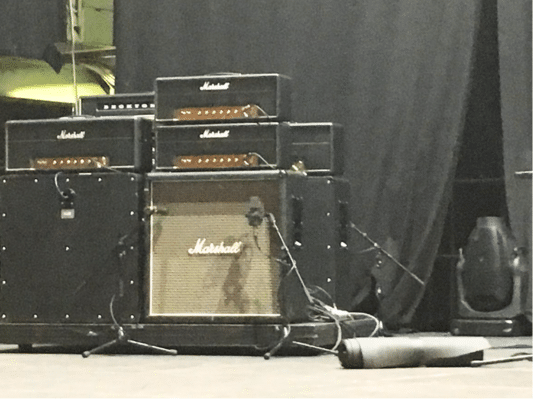
Jeff has always favored Marshall and Fender tweed amps. He loves the predictability of how a Stratocaster behaves played through a Marshall stack. Jeff particularly likes the sound of Marshall JTM45 and DSL amps.
Magnatone recently built him a special version of their Super Fifty-Nine called the BECKTONE. This amp can be seen and heard at his 50th anniversary “Live At The Hollywood Bowl” show, which was recorded in 2016 (but released in 2017).

He sets the sound of his amps on the trebly side with the bass turned all the way down and the “presence” control tuned up.
Guitar Effect Pedals And Other Little-Known Facts
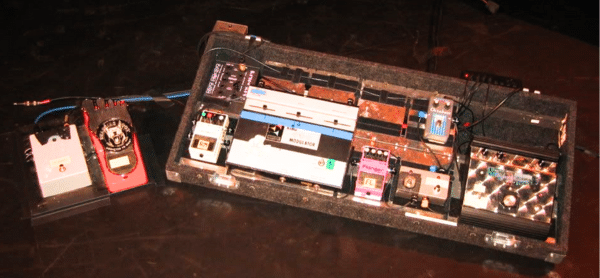
Jeff was not typically known for using a lot of effects until more recently. In the early days, he sometimes used a wah-wah pedal and a Pro Co Rat distortion box but favored plugging directly into his amp and turning it up to get his overdrive.
These days, Jeff has a pedalboard with various boxes and pedals but uses them sparingly and tastefully. When you’re Jeff Beck, you can let your fingers make most of the sounds you need.
As already mentioned above, Jeff uses a glass guitar slide to create absolutely wicked legato sounds that seem to propel his music into the next dimension.
Jeff used a talk-box in 1968 on “Blues Deluxe” with Rod Stewart from the “Truth” album to emulate the sound of a human voice. He used it again on “She’s A Woman” from his 1975 album Blow By Blow. Take a listen for a special treat.
Jeff uses a guitar cable to plug directly into his array of effects and amps even to this day. He does not use a wireless transmitter, which he feels would change his sound. He is really a perfectionist and purist at heart.
Jimmy Page is another notable player that does not use a wireless setup. For more info on Jimmy, see Led Zeppelin Celebration Day Review – Their Fabulous Return!
Let’s not forget that bottle of baby powder that Jeff has been seen using on stage. If you look closely, you can spot it sitting on one of his amps. He apparently has sweaty hands, making his guitar neck gymnastics a little difficult to pull off, even for him.
Songs That Showcase Jeff Beck’s Guitar Style
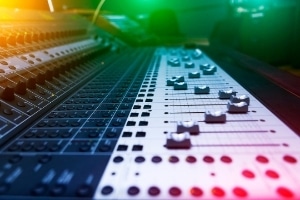
It isn’t easy to pick just a few songs that demonstrate the full range of techniques in Jeff’s guitar style.
Here are a few of my favorites that I grew up with and some of his newer tunes.
You can begin with these and then progressively listen to everything in the discography listed below.
- Beck’s Bolero – Truth (album)
- Ice Cream Cakes – Jeff Beck Group
- Going Down – Jeff Beck Group
- Freeway Jam – Blow By Blow
- Cause We’ve Ended As Lovers – Blow By Blow
- Goodbye Pork Pie Hat – Wired
- Blue Wind – Wired
- Space Boogie – There and Back
- Star Cycle – There and Back
- Guitar Shop – Guitar Shop
- Where Were You – Guitar Shop
- Nadia – You Had It Coming
- Nessun Dorma – Emotion and Comotion
- Over The Rainbow – Emotion and Comotion
Jeff Beck’s Honors And Awards
Jeff Beck’s career has been nothing short of extraordinary, and the numerous awards and honors he has received are a testament to his enduring influence and exceptional skill as a guitarist.
- Grammy Awards:
- 1985: Best Rock Instrumental Performance for “Escape”
- 1989: Best Rock Instrumental Performance for Jeff Beck’s Guitar Shop
- 1999: Best Rock Instrumental Performance for “A Day in the Life”
- 2001: Best Rock Instrumental Performance for “Dirty Mind”
- 2010: Best Pop Collaboration with Vocals for “Imagine” (with India Arie, Herbie Hancock, and Pink)
- 2011: Best Rock Instrumental Performance for “Hammerhead”
- British Academy’s Ivor Novello Award:
- 2014: Outstanding Contribution to British Music
- Rock and Roll Hall of Fame:
- 1992: Inducted as a member of The Yardbirds
- 2009: Inducted as a solo artist
In addition to these awards, Beck was also nominated for numerous other awards, including the Brit Awards and the American Music Awards.
Discography
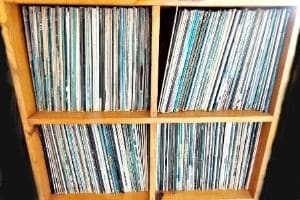
If you listen to Jeff’s 18 albums in chronological order, you will definitely hear the progression in his style’s evolution, which was “uniquely Jeff” from the very beginning!
You can also hear his transition from guitar pick to fingerpicking, which began around the 1980s and became apparent on the album “There & Back.”
- Yardbirds (1966) – AKA “Over, Under, Sideways Down” and “Roger The Engineer”
- Truth (1968) – With Ronnie Wood & Rod Stewart
- Beck-Ola (1969) – With Tony Newman & Nicky Hopkins
- Rough and Ready (1971) – With Bobby Tench, Max Middleton, Cozy Powell, and Clive Chaman
- Jeff Beck Group (1972) – Also With Bobby Tench, Max Middleton, Cozy Powell, and Clive Chaman
- Beck, Bogert, and Appice (1973) – With Tim Bogert and Carmine Appice
- Blow by Blow (1975) – With Max Middleton, Phil Chen, Richard Bailey, and Stevie Wonder (clavinet on “Thelonius”)
- Wired (1976) – With Max Middleton, Jan Hammer, Wilbur Bascomb, Narada Michael Walden, and Richard Bailey
- There & Back (1980) – With Jan Hammer, Tony Hymas, Mo Foster, and Simon Phillips
- Flash (1985) – With Jan Hammer, Tony Hymas, Carmen Appice, Rod Stewart, and many others
- Jeff Beck’s Guitar Shop (1989) – Wth Tony Hymas, and Terry Bozzio
- Frankie’s House (1992) – Movie soundtrack in conjunction with Jed Lieber
- Crazy Legs (1993) – With Adrian Utley, Ian Jennings, Clive Deamer, Leo Green, and others
- Who Else! (1999) – With Tony Hymas, Jennifer Batten, Jan Hammer, and many others
- You Had It Coming (2001) – With Jennifer Batten, Steve Alexander, Randy Hope Taylor, and others
- Jeff (2003) – With Steve Barney, Saffron, Andy Wright, and many others on vocals
- Emotion & Commotion (2010) – With Tal Wilkenfeld, Jason Rubello, Vinnie Colaiuta, and many others
- Loud Hailer (2013) – With Carmen Vandenberg, Rosie Bones, Davide Sollazzi, and Giovanni Pallotti
- 18 (2022) – With Johnny Depp, Vinnie Colaiuta, Rhonda Smith, Pino Palladino, Robert Adam Stevenson, Tommy Henriksen, Ben Thomas, James Pearson, Jason Rebello, Vanessa Freebairn-Smith and Olivia Safe
Frequently Asked Questions

Here are some of the questions I get asked about Jeff Beck’s guitar style.
If your question does not appear here, please put it in the comments, and I will get right back to you with an answer.
What Tuning Did Jeff Beck Use?
Jeff Beck primarily uses standard tuning (E A D G B e) for most of his work. However, he’s known for occasionally experimenting with alternate tunings to achieve specific tonal qualities or to facilitate slide playing. He occasionally employs drop-D tuning for specific songs. This allows for a deeper, richer sound.
Did Jeff Beck Play A Telecaster?
Yes, Jeff played a Fender Telecaster during his time with The Yardbirds from 1965 to 1967. The Telecaster was instrumental in shaping the band’s iconic blues-rock sound. He had a 1958 Telecaster that Jimmy Page gave him.
When Did Jeff Beck Play A Les Paul?
Jeff played a Les Paul during his early years, particularly around the time he was with The Jeff Beck Group in the late 1960s. The Les Paul was a staple in creating the heavy blues-rock sound that the group was known for.
Why Did Jeff Beck Switch To Strats?
Jeff switched to Fender Stratocasters in the late 1960s for their versatility and tonal range. The Strat’s whammy bar allowed him greater freedom for his unique techniques, like finger vibrato and volume swells. The switch was also influenced by his desire to explore different sonic landscapes, something the Stratocaster could readily offer.
What Strings Does Jeff Beck Use?
Jeff has been known to use Ernie Ball strings for their durability and tonal quality. In recent years, he’s also been spotted using SonoTone strings, which are praised for their vintage tone and warmth. Both brands offer the reliability and sound characteristics that complement Beck’s intricate playing style. He uses string gauges 10-46 & 11-48.
What Scale Patterns Does He Favor?
Beck frequently uses the pentatonic and blues scales. He often adds chromatic notes for extra flavor.
What’s Jeff’s Approach To Harmonics?
Beck often uses both natural and artificial harmonics to add sparkle and emphasis to his solos.
Does Jeff Use Two-Hand Tapping?
Beck has been known to use two-hand tapping techniques, although sparingly. He prefers traditional techniques for most of his work.
What Is Jeff’s Take On Speed Vs. Melody?
Beck prioritizes melody and emotion over speed. He believes in making every note count.
How Does Jeff Beck Approach Dynamics In His Playing?
Beck is a master of dynamics, often using volume swells and subtle picking changes to create emotional depth.
Why Does Jeff Beck Not Use A Pick?
Jeff Beck chooses not to use a pick to achieve a more nuanced and expressive tone. He gains greater control over dynamics and articulation by using his fingers, allowing for a more intimate connection with his instrument. This fingerstyle approach has become a hallmark of his unique guitar style.
Final Thoughts

Jeff Beck stands as one of the true musical innovators of our time. His playing style is essentially unbounded, and he makes the guitar speak in a way that is both captivating and spellbinding.
Beck routinely breaks new ground in blues, rock, rhythm & blues, and jazz fusion. He has never been content to stand on his laurels and is constantly taking his music in a new direction.
Jeff makes you want to take that whammy bar out of your guitar case and make it an integral part of your playing. His microtonal bends and guitar slides will have you brushing up on your ear training. See my article on Ear Training For The Guitar – Keeping It Simple For Success!
If you are not familiar with his music, I urge you to listen to his recorded works. It will definitely widen your musical horizon and make you a better guitar player.
So is Jeff Beck the best guitar player on the planet? I guess that depends on your measuring rod. If you value pure innovation and tasteful playing above all else, then he very well might just fit the bill. At the very least, Jeff is a monster guitar player whose music is certainly destined to be immortal among guitar freaks everywhere.
For more on Jeff, see Best Telecaster Players – These Tele Masters Will Shock You! and Eric Clapton Crossroads Guitar Festival 2019 Blu Ray Review

Here is an excellent video from Marbin Music that demonstrates some of the Techniques Jeff used to get his signature sound. Check it out!
Tell Me What You Think About Jeff Beck’s Guitar Style

I hope you enjoyed reading my article on Jeff Beck’s guitar style and that you found it helpful. If there is anything that I can clarify or if you have any questions about Jeff’s technique, please let me know in the comment section.
- Where does Jeff rank in a list of your top ten favorite guitar players, and why?
- What is your favorite Jeff Beck song?
- Have you ever been to a Jeff Beck concert and what was your overall impression?
- Do you own a Fender Jeff Beck Signature Stratocaster and what do you like or dislike about it?



Wow, that was a great analysis of Jeff Beck’s guitar playing style. He is one in my top three list with Jimmy Page, and Eric Clapton. He is one of a kind. I have never seen anybody else playing the guitar the way he does. His influence on guitar playing and music is unique. He has the ability to transfer his feelings to the guitar that’s what makes him so unique. It is great to see him still active.
Hi Nektarios,
Thank You for your comments!
That’s really great to hear you are such a fan of Jeff Beck! You also mentioned Eric & Jimmy. They are three incredible guitar players. Perhaps you saw them all play together at the ARMS Concert in 1983. The footage is available on YouTube if you missed it.
Frank
Who the heck is Jeff beck?! How could somebody possibly not know who that is?! He is literally one of the best guitarists in the world, in my opinion. I honestly wonder how somebody could end up on this website without knowing who that is. I am very happy to know that I have found a website of someone who is like minded in the art of guitar
Hi Misael,
Thanks for your comments! They really made me smile!
It is hard to devote years to learning as much as you can about playing guitar or music appreciation without bumping into the absolutely extraordinary Jeff Beck and being very impressed by what you hear.
I really intend to build up this website with lots of interesting information about great guitarists and guitar equipment so I hope you will come back often to have a look!
Frank
According to drummer Carmine Appice, Bolin’s expert playing also inspired Jeff Beck on his future instrumental classics, 1975’s Blow By Blow and 1976’s Wired. “I was with Jeff in Beck, Bogert & Appice. We would listen to Mahavishnu Orchestra and the Billy Cobham album with Tommy on it
Hi, Preston
I really appreciate your comments!
Tommy Bolin was a great guitar player. It’s a shame he died so young! John McLaughlin is another amazing guitarist and an inspiration to Jeff. They’ll never be another Jeff Beck – so inventive, a guitar SuperGod!
Frank
amazing content appreciate all the info
Hi, Herb
Thanks so much!
Jeff Beck is one of my all-time favorite guitar players, and it’ll take me years to get over his untimely passing.
Rock On! ?
Frank ?